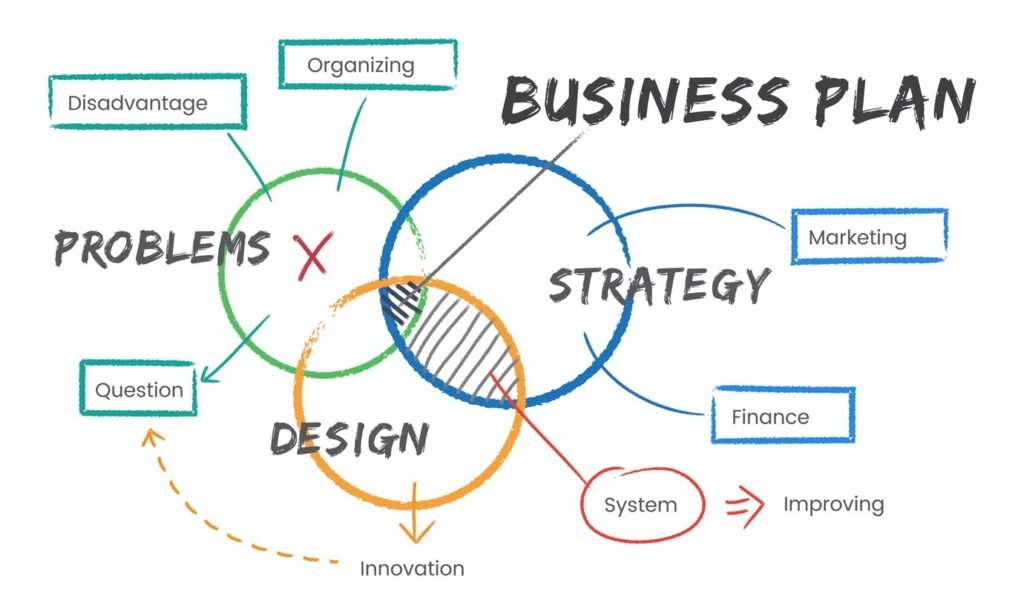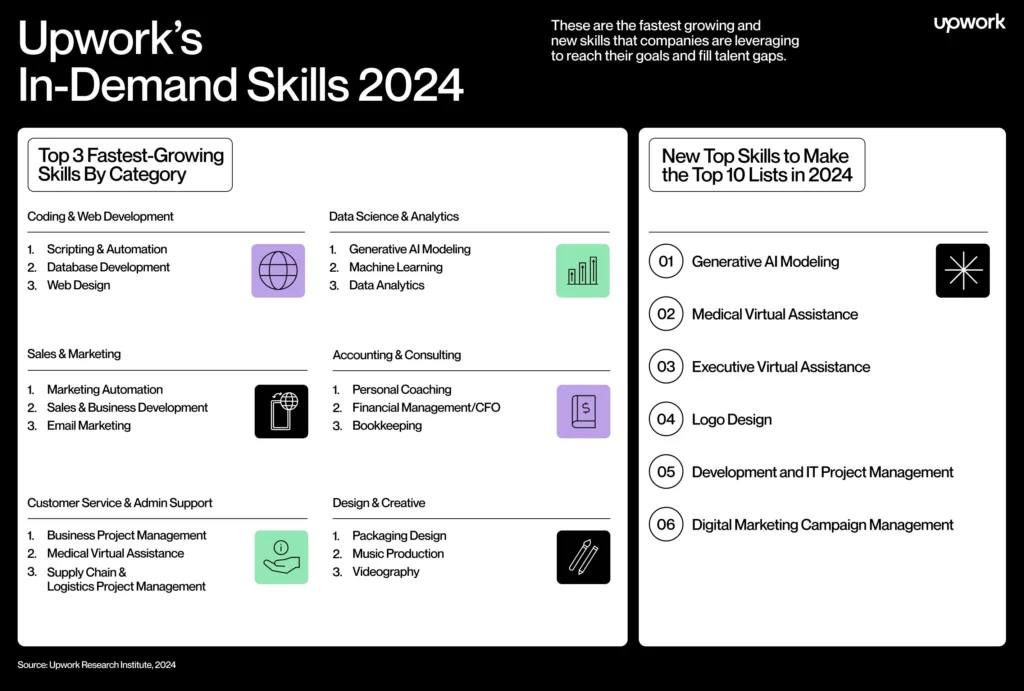“The best way to predict the future is to create it.” -Peter Drucker
Starting a small business is a thrilling journey that can lead to personal fulfillment and financial independence. Whether you have a groundbreaking idea or simply a passion you want to turn into a career, here’s a step-by-step guide and free online course to help you start your small business.
Quick Navigation
ToggleDeveloping a Business Idea-

“You can design and create, and build the most wonderful place in the world. But it takes people to make the dream a reality.”-Walt Disney
Developing a Business Idea is the first crucial step in launching your venture. This involves introspection and market analysis. Start by identifying your passions and skills; your business idea should ideally align with both. For instance, if you love baking and have honed your skills over the years, starting a bakery could be a great idea. Once you have an idea, conduct thorough market research to validate it. This means understanding your industry’s landscape, identifying market demand, and studying your target audience’s needs and preferences. Moreover, analyzing your competitors can provide insights into what works and what doesn’t. Tools like surveys, focus groups, and direct conversations with potential customers can help you gather valuable data. This research phase is crucial because it helps you refine your idea and ensures there is a market for your product or service, reducing the risk of failure.
Here are 8 small business ideas for you-
- Health and Wellness Coaching: Provide personalized wellness plans, incorporating fitness, nutrition, and mental health guidance, delivered through online platforms.
- Eco-Friendly Packaging Solutions: Create sustainable and biodegradable packaging for businesses looking to reduce their environmental footprint.
- Pet Tech Products: Design and sell tech gadgets for pets, such as smart collars, interactive toys, and health monitoring devices.
- Personalized Meal Prep Services: Offer customized meal planning and preparation services for individuals with dietary restrictions or specific health goals.
- Sustainable Fashion Brand: Launch a fashion line focused on eco-friendly materials, ethical production processes, and sustainable practices.
- Digital Marketing for Local Businesses: Specialize in creating and managing digital marketing campaigns for small, local businesses to increase their online presence.
- Custom Furniture Design: Offer bespoke furniture design and creation, focusing on unique, handcrafted pieces made from sustainable materials.
- AI-Powered Chatbots for Small Businesses: Develop and implement AI-driven chatbots to help small businesses improve customer service and engagement.
New Big, Small & Tiny Business Ideas Generation & Selection –
Generate simple good IT, Online, Web, and Home start-up ideas; select best; Find biz ideas; suggestions for entrepreneurs. Enroll Now
Discover Effective Online Business Ideas-
A-Z Guide to Discovering the Potential of various online business models and Choosing the right one for You. Enroll Now
Beginners Business Modeling-
How To Develop A Profitable Business Model Around Your Idea. Enroll Now
13 Business Administration Online Free Udemy Course With Certificate
Business Plan-

“Failing to plan is planning to fail.”-Alan Lakein
Once you have a solid idea, the next step is to Write a Business Plan. A business plan is more than a document; it’s a strategic tool that outlines your vision, objectives, and the pathway to achieving them. Start with an executive summary that provides a snapshot of your business idea and goals. The business description should detail what your business does, its mission, vision, and the unique value it offers to customers. Your market analysis should include data on industry trends, market size, and an in-depth look at your target audience. This section should demonstrate that there is a viable market for your business. Organizational structure is another critical element, outlining the hierarchy and management team. Clearly define the roles and responsibilities within your business. In the products or services section, explain what you’re selling and highlight the benefits to your customers. Your marketing and sales strategy should detail how you plan to attract and retain customers, covering aspects like branding, marketing channels, and sales tactics. If you’re seeking financing, include a funding request that specifies your funding needs, potential sources, and how you’ll use the funds. Finally, financial projections provide a forecast of your income statements, cash flow statements, and balance sheets for the next few years, demonstrating the financial viability of your business.
The Complete Business Plan Course (Includes 50 Templates)-
Group Home Business Plan – Template, Sample, Example & Guide-
Business Plan for a Group Home Business. How to complete Word Templates so you have docs to start and training support. Enroll Now
Mini MBA: Business Strategy 2 Business Plan-
Mini MBA & Business Plan: Business Plan Coaching to Enhance Business Management & Business Writing. Enroll Now
Business Plan: For Startup & Small Business Success Today!-
Business Planning success can be easily achieved by using this Comprehensive Business Plan & Cashflow Forecast template. Enroll Now
Business Structure-
“Organizing is what you do before you do something so that when you do it, it is not all mixed up.”-Peter Drucker
Choosing the right Business Structure is essential, as it affects your taxes, liability, and paperwork. Each structure has its pros and cons, so it’s important to choose the one that best suits your business needs. A sole proprietorship is the simplest form, where the business and the owner are one entity. This structure offers complete control but comes with personal liability for business debts. Partnerships involve two or more people sharing ownership, which means shared responsibility and combined skills and resources, but also shared liability. A Limited Liability Company (LLC) offers liability protection without the complexity of a corporation, making it a popular choice for small businesses. It protects personal assets from business debts while allowing profits to be taxed on the owner’s personal tax return. Corporations are more complex and suited for larger businesses with multiple shareholders. They offer strong liability protection but come with more regulations and potentially higher taxes. Consulting with a legal advisor can help you understand which structure is best for your business.
Implementing Strong Corporate Governance & Legal Structures-
Choosing the Right Legal Structures; Registering your Business; Understanding the laws that affect your business. Enroll Now
Tax Prep for Entrepreneurs – by Accounting Play–
More Value. Less Tax. Better Decisions. Enroll Now
Start-Up to Scale Up: A Growth Formula for Small Businesses-
How to scale up your business while avoiding the common traps that many growing businesses fall into! Enroll Now
Business Environment And Ethics-
Learn Business Environment, Corporate Governance, Business Ethics & Consumer Rights To Plan & Run Your Business Smoothly. Enroll Now
Register Your Business-
“Someone’s sitting in the shade today because someone planted a tree a long time ago.”-Warren Buffett
With your business plan and structure in place, it’s time to Register Your Business. This involves several steps to ensure your business is legally recognized. Start by choosing a unique and relevant business name that reflects your brand and is not already in use. Check its availability through a trademark search and ensure it complies with state naming rules. Next, register your business with the appropriate local, state, and federal authorities. This process can vary depending on your business structure and location. For example, if you’re forming an LLC, you’ll need to file articles of organization with your state. Sole proprietorships might only require a local business license. Additionally, research the specific licenses and permits required for your industry and location to operate legally. These might include health permits, zoning permits, or professional licenses. This step is crucial to avoid legal issues and fines that can derail your business before it even starts.
Company Formation Law: How To Register A Business (US Law)-
Intro to business incorporation and liability protection for entrepreneurs with LLC, S Corp, and C Corp business entities. Enroll Now
Ten Essential Steps to Start a Business (California Edition)-
Step-By-Step Course (10 STEPS). Enroll Now
Business – How To Start An LLC In Texas-
Your step-by-step guide on how to set up a Limited Liability Company in Texas. Detailed steps on making your LLC. Enroll Now
The Complete Government Contracting Bootcamp-
Learn from Scratch How to Grow Your Business with the Largest Customer in the World. Enroll Now
Finances-

“You must gain control over your money or the lack of it will forever control you.”-Dave Ramsey
Setting up your Finances is a critical step to ensure your business runs smoothly. Start by opening a business bank account to keep your personal and business finances separate. This separation simplifies accounting and tax filing, and it also presents a more professional image to your clients and suppliers. Choosing an accounting system is another important task. Accounting software like QuickBooks, Xero, or FreshBooks can help you track income, expenses, and taxes efficiently. Alternatively, hiring an accountant can ensure your financial records are accurate and compliant with tax laws. Understanding your tax obligations is essential to avoid penalties. Learn about the different types of taxes your business will need to pay, such as income tax, self-employment tax, sales tax, and property tax. Keep track of tax deadlines and consider setting aside a portion of your income to cover tax payments. Proper financial management helps you make informed decisions, maintain cash flow, and set your business up for long-term success.
Entrepreneurial Finance Basics For Every Entrepreneur-
From Basic Finances To Business Valuation, From Fund Raising To Harvesting, Learn All You Need As An Entrepreneur. Enroll Now
Introduction to Corporate Finance (Mergers & Acquisitions)-
M&A, Capital Raising, Capital Markets, Debt Financing, Equity Financing and more. Enroll Now
Finance for Business Startups-
Finance for the Entrepreneur. Enroll Now
Learn Finance from Movies & TV: Billions, Wolf of Wall St.-
By an award-winning MBA Prof who worked at Goldman Sachs, at Hedge Funds, and in the Venture Capital industry. Enroll Now
Funding-

“Never take your eyes off the cash flow because it’s the lifeblood of business.”-Richard Branson
Securing Funding is often necessary to get your business off the ground. There are several ways to finance your business, each with its own advantages and challenges. Self-funding, or bootstrapping, involves using your savings or personal assets. This method allows you to retain full control of your business but can be risky if your savings are limited. Business loans from banks or credit unions are a common option. To secure a loan, you’ll need a strong business plan, good credit history, and collateral. Investors, such as venture capitalists or angel investors, can provide significant funding in exchange for equity in your company. This can bring in not only capital but also valuable expertise and connections. Grants are another option, often available from government agencies or private organizations, and do not need to be repaid. However, they are competitive and may come with specific requirements. Crowdfunding platforms like Kickstarter or Indiegogo allow you to raise funds from the public. This method not only provides capital but also helps you build a community of early supporters. Each funding option requires careful consideration to ensure it aligns with your business goals and financial situation.
How to Find New Funders in Your Backyard in Under 60 Minutes-
For folks struggling to find funders that align with their organization; leave with a clear strategy to win more grants. Enroll Now
Business Magic For Funding Development and Success-
Learn business magic secrets used over the past 50,000 years by the world’s top companies. Enroll Now
Startup Fund Raising-
Secure Your Startup’s Future: Master Funding Strategies, Woo Investors, and Craft Your Success Story! Enroll Now
The Startup Funding Formula-
How to design your startup so that it is attractive to investors! Enroll Now
Brand-

“Your brand is what other people say about you when you’re not in the room.”-Jeff Bezos
Building your Brand is vital for attracting and retaining customers. Your brand is more than just a logo; it’s the overall image and perception of your business. Start by developing a brand identity, which includes your logo, brand colors, and a compelling message that resonates with your target audience. Consistency in branding across all platforms helps build trust and recognition. Establish an online presence by creating a professional website that is user-friendly and optimized for search engines. Your website should clearly communicate who you are, what you offer, and how customers can contact you. Setting up social media profiles on platforms like Facebook, Instagram, Twitter, and LinkedIn allows you to engage with your audience, share content, and promote your products or services. Implementing a marketing plan that includes a mix of online and offline strategies is crucial. Utilize SEO to increase your website’s visibility in search engine results, run social media marketing campaigns to reach a wider audience, and use email marketing to nurture relationships with your customers. Local advertising, such as flyers, newspaper ads, and community events, can also help raise awareness in your area. Building a strong brand takes time, but it’s essential for long-term success.
Business Branding: The Complete Course Part 1 – Strategy-
Build A Strategic Brand From The Ground Up, To Catapult Your Marketing Impact. Enroll Now
Brand Strategy Bootcamp: Develop Actionable Brand Strategies-
*FREE Brand Strategy Action Plan* Build Your Brand Strategy with the Leading Strategist for Startup Brands. Enroll Now
Business Branding – beginners guide to brand development-
Brand development for entrepreneurs, freelancers, or digital marketers. Learn how to build a brand. Enroll Now
Build Your Leadership Brand with Generative AI-
Learn how to craft your leadership brand so that who you are is how you’re known. Enroll Now
Branding & Brand Management with Dekker: Branding Strategy+
Branding Guide MBA Level: Brand Management, Branding Strategy, Brand Building | #1 Branding Course from top MBA F100 XP. Enroll Now
Operations-

“The entrepreneurial model is not intended to serve the business, but to serve your life.”-Michael Gerber
Setting up Operations involves laying the groundwork for your day-to-day business activities. If your business requires a physical location, choose one that suits your needs and budget. Consider factors such as foot traffic, accessibility, and proximity to suppliers and customers. Once you have a location, purchase the necessary equipment and supplies to start your operations. This could range from office furniture and computers to specialized machinery and inventory. Hiring employees may be necessary as your business grows. Recruiting the right talent and providing proper training is essential for maintaining quality and efficiency. Establish standard operating procedures (SOPs) to ensure consistency and efficiency in your operations. SOPs outline the step-by-step processes for various tasks, helping to maintain quality control and reduce errors. Setting up operations also involves creating a workflow that optimizes productivity and minimizes downtime. This might include scheduling, inventory management, and customer service protocols. A well-organized operation ensures that your business runs smoothly and provides a positive customer experience.
Business Operations: Improving Protocol Efficiency-
Complete Guide on How to Operate a Business More Effectively. Enroll Now
Introduction to business-
Business Management Operations Marketing. Enroll Now
Essentials of Strategic Budgeting for Business Operations-
Steps involved in crafting a strategic business budget. Enroll Now
AI and Operations Management & Strategic Management 2.0-
Operations Management, Strategic Management, Corporate Strategy, Business Ethics, Business Management, Business Operations. Enroll Now
Operations Management A-Z: Business Processes and Systems-
Operations Management: Supply Chain & Business Processes in Industry for Manufacturing and Services Organizations. Enroll Now
Launch Your Business-

“I knew that if I failed I wouldn’t regret that, but I knew the one thing I might regret is not trying.”-Jeff Bezos
When you’re ready, it’s time to Launch Your Business. A soft launch allows you to test your business with a small group of customers, gather feedback, and make any necessary adjustments before the official launch. This can help you identify any issues and improve your offerings. Plan your official launch with a strategy to create buzz and attract customers. Hosting an event, offering promotions, or collaborating with influencers can generate excitement. Use press releases to announce your launch to local media, and leverage your social media platforms to spread the word. Community events and networking can also help you reach a wider audience and establish your presence. Your launch is a critical moment to make a strong first impression, so ensure that everything is well-prepared and aligned with your brand message.
“Your most unhappy customers are your greatest source of learning.”-Bill Gates
Finally, continuously Monitor and Grow Your Business. Regularly tracking performance using key performance indicators (KPIs) helps you measure success and identify areas for improvement. KPIs might include sales figures, customer acquisition costs, website traffic, and customer satisfaction rates. Gathering customer feedback through surveys, reviews, and direct conversations can provide valuable insights into how your products or services are perceived. Use this feedback to make improvements and adapt to changing market needs. Staying flexible and ready to pivot your business strategy as market conditions change is crucial for long-term success. Look for opportunities to grow, such as introducing new products or services, entering new markets, or scaling up operations. Networking with other business owners, attending industry events, and staying informed about market trends can also help you identify growth opportunities. By continuously monitoring your business and being proactive in making improvements, you can ensure sustained growth and success.








![20 Best Free Online WordPress Courses for Beginners with Certificates [2024]](https://freepremiumdeals.com/wp-content/uploads/2024/07/20-Best-Free-Online-WordPress-Courses-for-Beginners-with-Certificates-2024-1024x576.png)
![15 Best Google Analytics Courses (GA4) Online with Certificates [2024]](https://freepremiumdeals.com/wp-content/uploads/2024/07/15-Best-Google-Analytics-Courses-GA4-Online-with-Certificates-2024-1024x576.jpg)